
Cornus kousa (Japanese Dogwood, Kousa Dogwood) red berry fruit hanging
Kousa Dogwood Fruit is a small, red-orange berry that grows on a deciduous tree native to East Asia. It has been used in traditional Chinese medicine for centuries due to its health benefits. The fruit is sweet and slightly tart, with flesh similar to an apple. Kousa Dogwood Fruit is high in fiber, vitamins, and minerals and contains powerful.
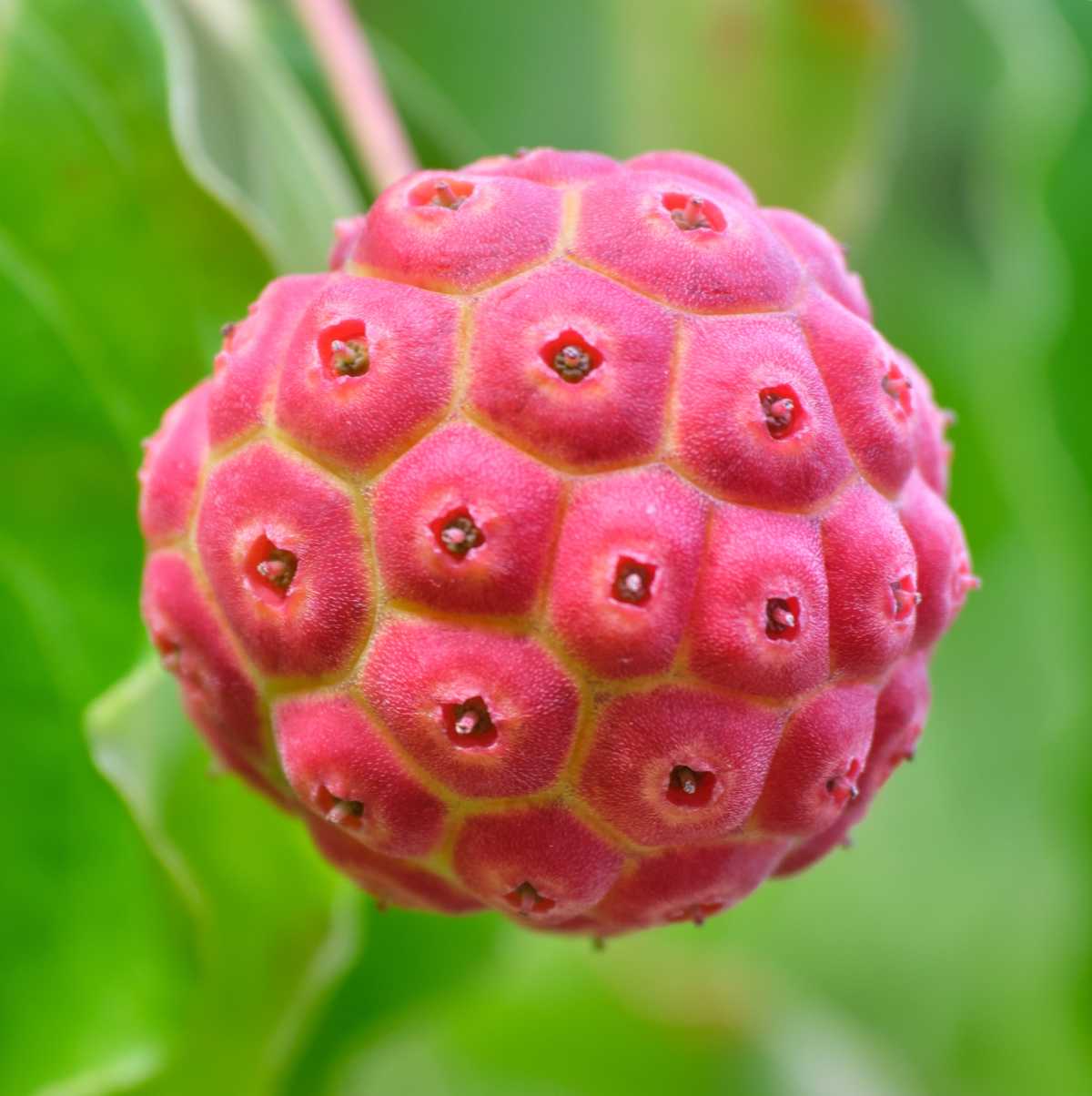
Japanese dogwood, striking flowers and fruits
Award-winning Cornus kousa 'Miss Satomi' (Kousa Dogwood) is an upright, spreading, medium-sized deciduous shrub with four seasons of interest. In spring, a heavenly array of star-like blooms appear. They consist of four narrowly pointed deep pink bracts surrounding the center cluster of tiny yellowish-green flowers.
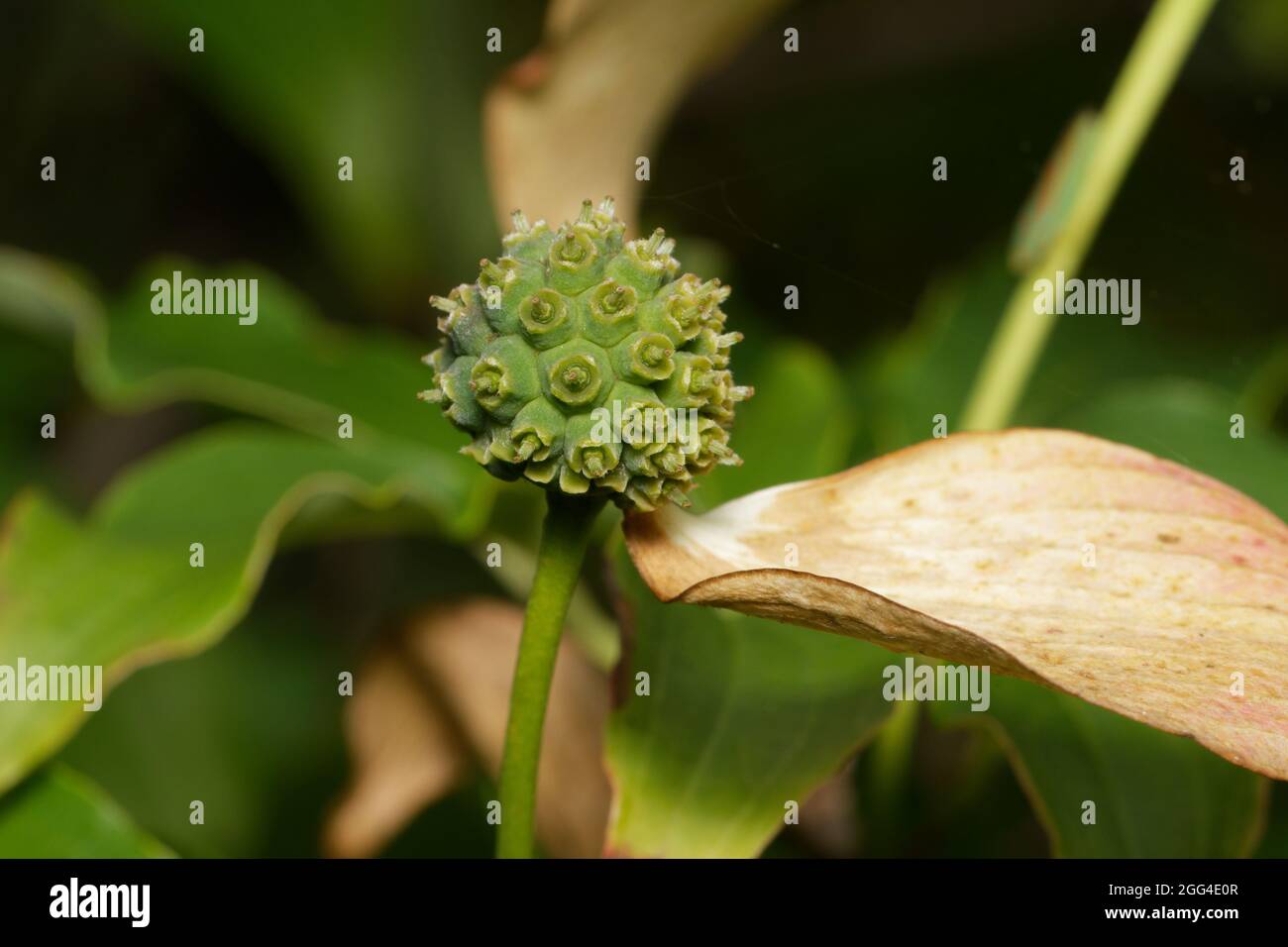
cornus kousa unripe green fruit of a Japanese dogwood Stock Photo Alamy
To cold stratify indoors, nick the seed. Place the seeds in a mixture of lightly moistened compost, sand, perlite, or vermiculite in a zip-top bag. Keep the seeds for 23 weeks at 39 F (refrigerator works well). Or keep the seeds warm for about 16 weeks at 68 F and then expose them to 4 to 16 weeks in the fridge.

Kousa dogwood fruit cornus kousa hires stock photography and images
Updated April 2022. Kousa dogwood ( Cornus kousa) is a small tree or shrub native to Asia that is now a widely popular landscape plant in the US. And it's easy to understand why… In Spring it will display a mass of delicate star-shaped flowers. And by summer you'll have an abundance of peculiarly shaped but sweet tasting fruits.
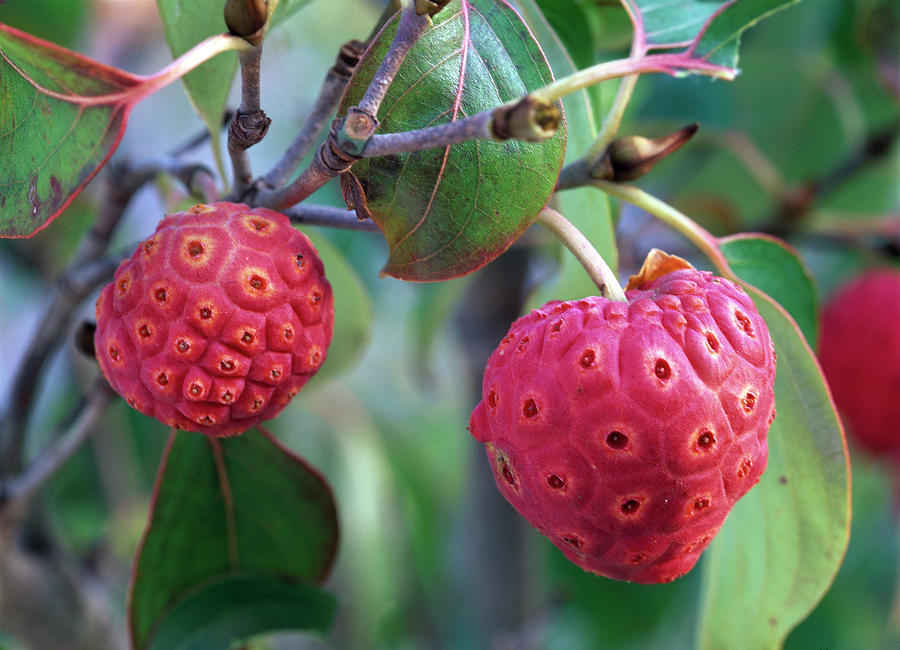
Cornus Kousa japanese Flower Dogwood, Fruits Photograph by Friedrich
Dogwood fruit, or Asiatic cornelian cherry fruit, is from the Japanese dogwood scientifically named Cornus kousa. Other names for the tree include Japanese cornelian cherry, Korean dogwood, Chinese dogwood, strawberry dog wood tree, and kousa dogwood. It is called shanzhuyu in pinyin Chinese.

Fruit of Kousa Dogwood Nature Photo Gallery
from 400 cm to 600 cm Growth characteristics sweeping upright Show more Origin The Japanese dogwood (Cornus kousa subsp. kousa), similar to the Chinese dogwood (Cornus kousa subsp. chinensis) is a sub-species of the Asian dogwood (Cornus kousa). In its garden form it is considered one of the richest flowering of the group of Dogwoods.

Japanese Dogwood Clare Bryden
Japanese Dogwood is a type of ornamental, flowering tree, that also goes by the name of Kousa Dogwood and Chinese Dogwood. It is known for its ability to flower in abundance, with blooms that are actually made from leaf bracts rather than petals. Japanese Dogwood trees are quite compact, making them suitable for small to medium gardens.

Is Kousa Dogwood Fruit Edible? Healing Picks
The name, "kousa," is simply the word for the plant in Japanese. It's also often called Japanese dogwood, Chinese dogwood, or Korean dogwood. It closely resembles the North American native, flowering dogwood ( Cornus florida), but is less vulnerable to disease.

Cornus Kousa fruit also known Japanese Dogwood Stock Photo Alamy
The fruit is native to North America and has a sweet flavor that is similar to grapes and cherries. Kousa Dogwood fruits are used in both hot and cold drinks. The fruit can also be used for both savory and sweet dishes. These recipes require only a few ingredients and are very simple to make.
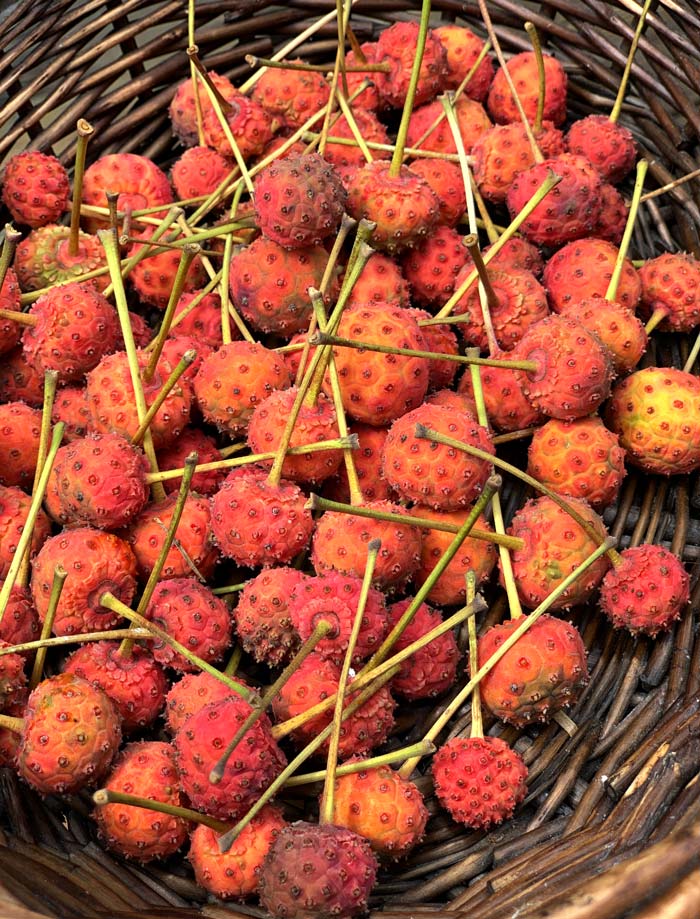
Introducing Kousa dogwood (Cornus kousa), the edible dogwood Tyrant Farms
It's native to Japan, Korea, and China, and produces an edible fruit in late summer. Kousa dogwood fruit - edible and quite delicious! The fruit of Kousa dogwoods is often called a berry, but it's technically an aggregate fruit that somewhat resembles a raspberry, although it's much larger. When do you harvest and eat Kousa dogwood fruit?

Fruits of the Japanese kousa dogwood (Cornus kousa), Bavaria, Germany
Kousa Dogwood (Japanese Dogwood) Hardiness Zones: 5 - 8 Average shipping height: 2' - 3' Select an option for shipping dates Bare Root or Potted? Select Option Bare Root Member Price $12.99 Reg. Price $16.99 Potted - 1 Gallon Container Member Price $49.99 Reg. Price $59.99 Potted - 3 Gallon Container Member Price $79.99 Reg. Price $89.99 i h

Japanese Dogwood Beautiful Fruit Stock Image Image of nature, plant
Cornus kousa is a dogwood variety that's native to Korea and Japan. It grows with an wide, overarching bearing and its size depends on how its growing environment supports it. Indeed, though it typically peaks at 6 to 10 feet tall (2 to 3 m), in good conditions it towers to nearly 30 feet (10 meters).

Japanese Dogwood Beautiful Fruit Stock Image Image of columbia
Cornus kousaF.Buerger ex Hance or Cornus kousaHance subsp. kousa - Japanese dogwood, native to Japan and Korea. Cornus kousaHance subsp. chinensis(Osborn) Q. Y. Xiang - Chinese dogwood, native to China. This variety supposedly flowers more freely and produces larger flower bracts, with leaves that are also said to be larger than average.
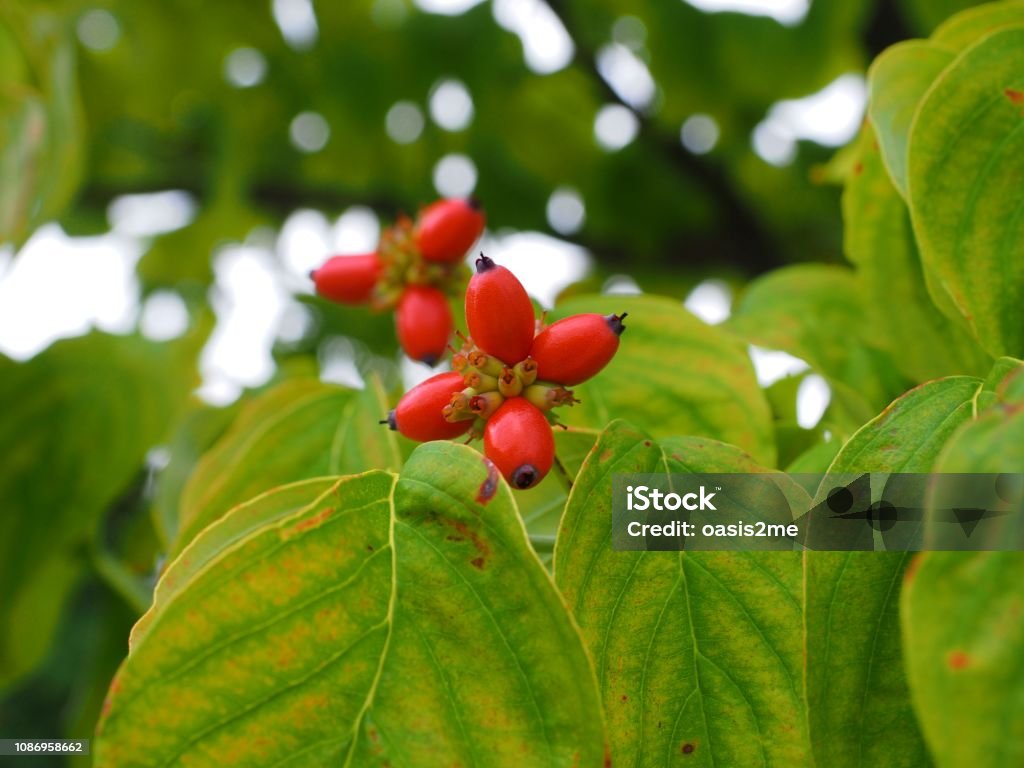
Dogwood Fruits Called Hanamizuki In Japan Stock Photo Download Image
Cornus kousa Growing and Care Guide. Scientific Name: Cornus kousa Common Name(s): Kousa Dogwood, Japanese Kousa, Chinese Kousa, Korean Kousa, Kousa Growing Zone (USA / UK Hardiness): 5 to 8 / H6 Plant Details. Life Cycle / Plant Type: Deciduous, bushy tree. Plant Height: 15 to 40 feet (4.5 to 12 m). Plant Spread: 15 to 32 inches (4.5 to 10 m). Blooms: Late spring and early summer.
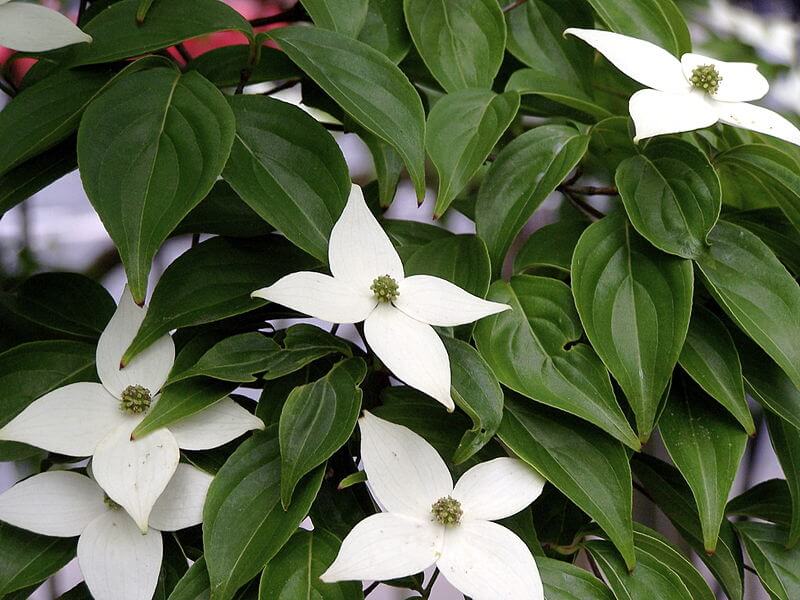
Kousa Dogwood Fruit, Tropical Flavor in Temperate Climates Eat The
Japanese flowering dogwood is cultivated in its East Asian homeland not only for its distinctive flowers, but also for the fruits. Their appearance is reminiscent of raspberries or litchis, but they don't taste as aromatic as these. The flesh is orange in color and has a gelatinous consistency.
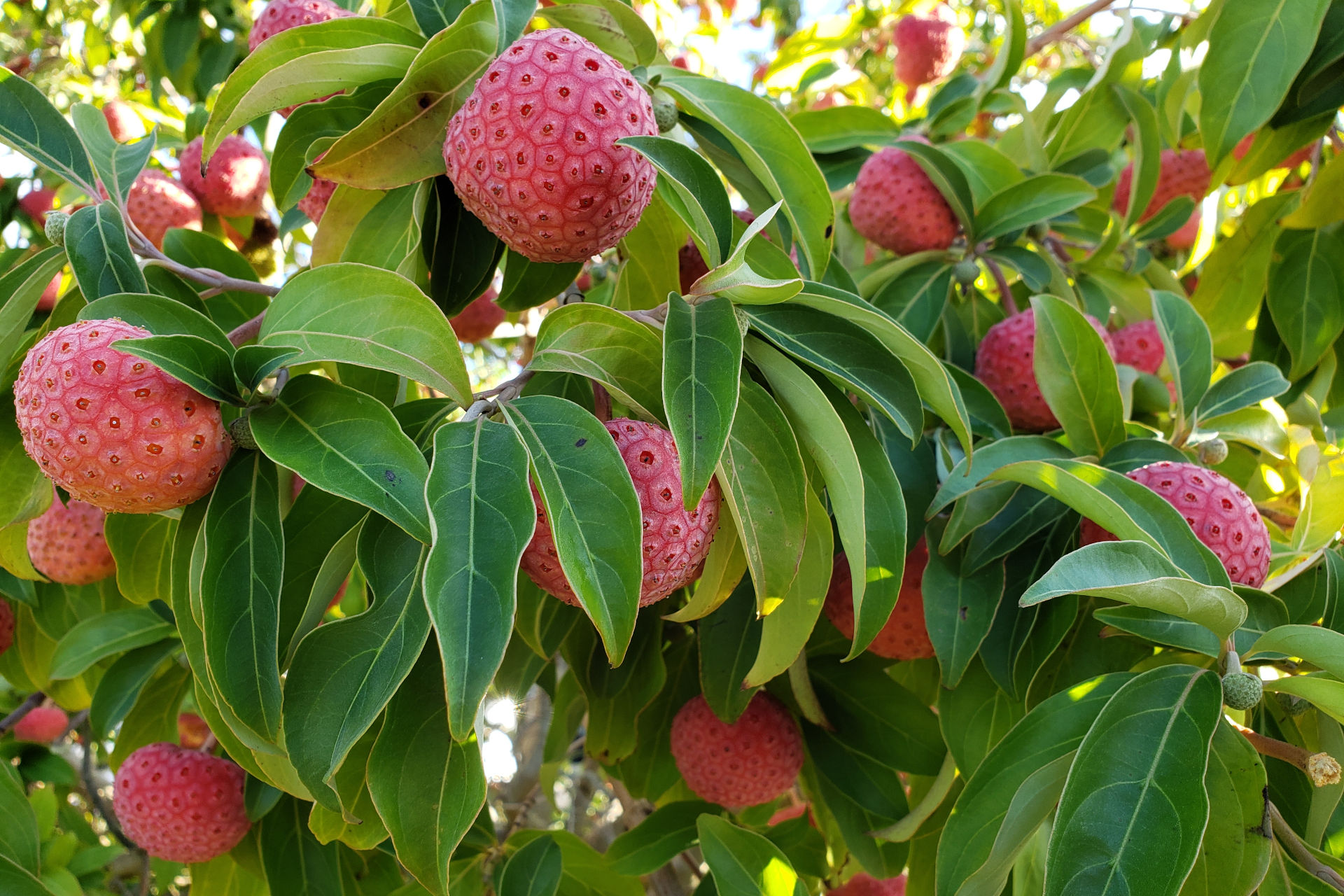
Japanese Dogwood Clare Bryden
The Kousa dogwood is a showy tree that has as much spread as height. It averages from 15 to 30 feet tall and the same in width. The dark-green leaves average 2.5 inches long and taper toward the end. The tree has an upright growth habit, and when the flowers open in early spring, it becomes the center point of attraction.